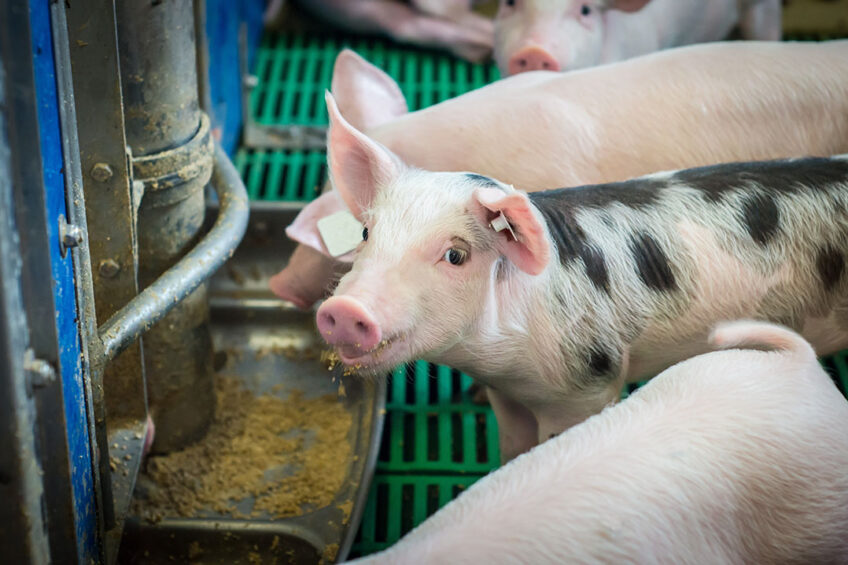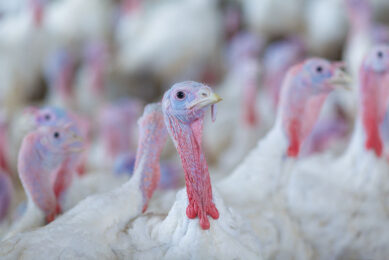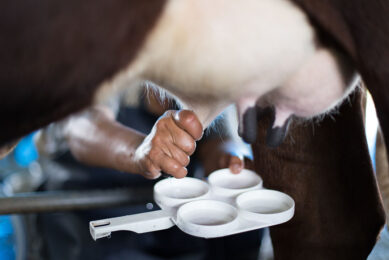Algoclay-based decontaminant can help fight mycotoxins

As piglets face many challenges during early life, the risk of mycotoxin transmission should be considered in contributing to development of disease later in life. Studies show that algoclay decontaminant can significantly lower the transfer of ZEN and DON from sows to piglets.
Mycotoxins are toxic compounds produced by fungi and are synthesised either before harvest (trichothecenes, fumonisins and zearalenone) mainly by Fusarium, or after harvest (aflatoxins and ochratoxins), mainly by Aspergillum and Penicillium. Fusarium is the most prevalent fungus globally, producing a variety of mycotoxins in the field. The most well-known mycotoxins produced by Fusarium are deoxynivalenol (DON) and zearalenone (ZEN). Contamination of feed commodities with mycotoxins is one of the most important negative factors in animal feed quality.
In many countries regulations or recommendations on safe levels of mycotoxins have been established. For example, in Europe, recommended maximum levels for DON and ZEN in swine feed are set at 900 ppb and 100 ppb, respectively. For poultry the recommendation is set for DON at 5,000 ppb. In research, many studies have been done with levels of mycotoxins far above the recommended safe levels, to get insight in the acute effects of mycotoxins. However, in practice, acute toxicity occurs occasionally, and chronic dietary exposure plays the main role in economic losses, especially when young animals are exposed to those mycotoxins. Therefore, recent studies focus on the impact of low to moderate level of DON and ZEN on sow’s and piglets.
Importance of Fusarium mycotoxins in feed
Olmix has developed a partnership with a French public laboratory, Labocea. This lab performs contaminant analyses with specific expertise on liquid chromatography-tandem mass spectrometry allowing the detection of more than 45 mycotoxins per tested sample. The Olmix-Labocea database is composed of about 15,000 feed ingredient samples, collected worldwide from 2013 to 2021. From the database, Olmix is able to show that the major mycotoxins worldwide remain DON, ZEN, fumonisins (FUM) and aflatoxins (AFB1), depending on the region. Besides, corn and corn derived feedstuffs are the major source of those mycotoxins. The co-occurrence of DON+ZEN is commonly found in the Olmix-Labocea database as well as in research. One study concluded that from the infinity of mycotoxin mixtures that may be found, the combination of DON+ZEN as well as AFB1+FUM, AFB1+OTA, and FUM+ZEN were most frequently observed. Synergies on the co-occurrence of DON+ZEN have been reported. This implies the individual toxicity of mycotoxins is exacerbated in the presence of one another. In field conditions it is common to find corn-based diets contaminated with both ZEN and DON simultaneously.
Mycotoxin impact on animals
It is now well established that exposure to, and absorption of, mycotoxins impair animal performances including decreased growth rate and poor feed efficiency. Besides, mycotoxins are predisposing factors of many diseases as they mainly impair digestive and immune function.
Scientific studies mostly focus on exposure to single, high mycotoxin concentrations, for a short period of time to enable significant effects under experimental conditions. Though, under practical conditions the presence of mycotoxins is mostly at lower levels. Recent studies have shown the impact of levels below EU-guidelines to have deleterious effects on production efficiency in poultry and swine.
Besides mycotoxins having a negative impact on animal health and performance, there is also a risk of transmission to the offspring in breeding animals. It has been previously demonstrated that exposure to high levels of ZEN or DON in sows during gestation impairs ovarian function in piglets and transfer of ZEN to the milk of sows has been reported. This way, the progeny will face immediate challenge by mycotoxin exposure in early life. More detailed information on this study has been previously published in All About Feed.
Mycotoxin transfer from sows to piglets
Recent work of Benthem de Grave et al. (2021a) studied the transmission of ZEN, DON, and their derivates to the colostrum and milk of sows. The sows were fed diets naturally contaminated with mycotoxin levels commonly found in the field. Diets contained 250ppb DON in combination with either low ZEN (100 ppb) or high ZEN (300 ppb) from day 109 of gestation until weaning. This study revealed higher transmission of ZEN derivatives in the high ZEN diet to colostrum and milk compared to the low ZEN diet. As piglets face many challenges during early life, the risk of mycotoxin transmission should be considered in contributing to development of disease later in life.
Algoclay-based decontaminant can protect animals
Further research was done by the same group of scientists on the use of an algoclay technology to protect animals against mycotoxins. A study with total 15 sows and an average parity of 5 were used in this experiment. Sows were transferred from the gestation unit to the farrowing room after 109 days of gestation. Sows were divided into 3 groups, fed with a high or a low level of ZEN without decontaminant or high ZEN with algoclay-based decontaminant till 26 days of lactation.
The diets were prepared with naturally contaminated feedstuffs and consequently the Fusarium mycotoxin DON was present in all diets at the same level (~250 ppb). As a ZEN source, two batches of sugar beet pulp were used. One had a low contamination, while the other was significantly contaminated with ZEN leading to a low ZEN diet with 100ppb ZEN and high ZEN diet with 300ppb ZEN. At the start of the trial (109 days of gestation), no difference of mycotoxin level was observed in the serum of sows. However, after 33 days of mycotoxin exposure, sows fed diets containing the algoclay decontaminant, significantly reduced ZEN concentration in sow serum (Figure 1). Moreover, there was a numerical tendency to reduce ZEN and DON concentration in piglets’ serum from sows fed algoclay decontaminant after 26 days of lactation and a significant reduction of the DON concentration in the serum of the same group of piglets.
This study showed a lower transfer of DON and ZEN from sows to piglets in the presence of the algoclay decontaminant. Piglets face many challenges during their lifetime, especially stress at weaning. Therefore, it is of great importance to minimise any predisposing factors, including mycotoxins, for development of secondary diseases or impaired performances of piglets in growing stages.
References are available on request






